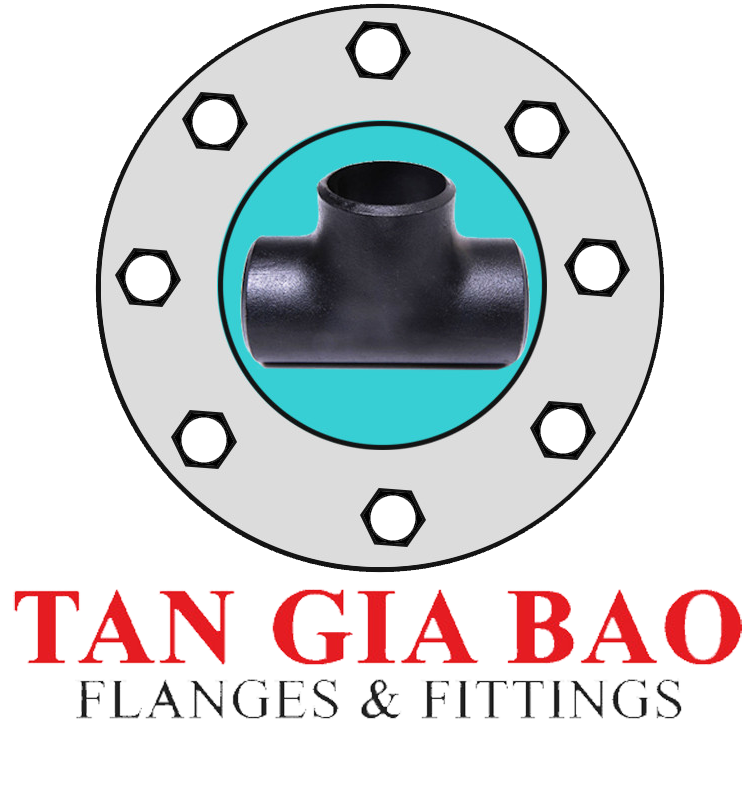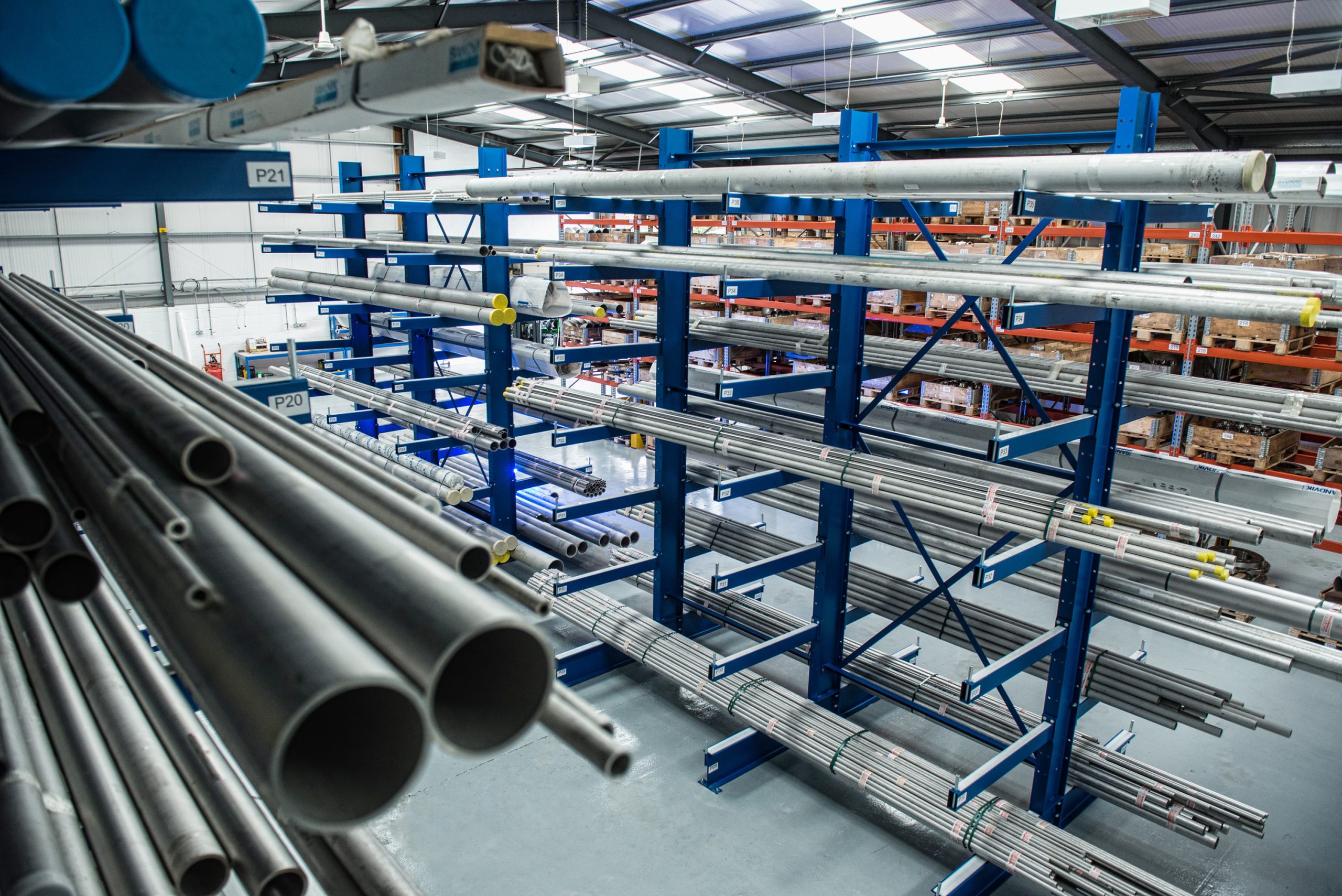-
+84 982 384 688 - Mr. Thi | +84 982 803 586- Ms. Hoa
-
theptangiabao@gmail.com
-
Thứ 2 - Thứ 7 | 07:30 - 17:00
Heat-Exchanger Seamless Tube A213 Grade T 122

 Product info
Product info
| Supplier: | Tapgroup internation.,JSC |
| Address: | Số 32 Lô N4D, đường X2A, Yên Sở, Hoàng Mai, Hà Nội |
| Phone: | 0084 933 86 77 86 |
| Email: | info@tapgroup.vn |
| Website: | https://supplier-pipe-tube-ongthep.com |
| Insurance: | 12 tháng |
| Status: | Mới 100% |
| Origin: | China, Korea, Malaysia, Thailand, Japan, EU, G7 |
| Name: | Heat-Exchanger Seamless Tube A213 Grade T 122 | |||||||||||||||
| Type Of Tube | Heat-Exchanger Seamless Tube, Low Alloy Steel A213 Grade T 122 | SMLS Tube, A213 Grade Tb | ||||||||||||||
|
Standard Specification for Seamless Ferritic and Austenitic Alloy-Steel Boiler, Superheater, and Heat-Exchanger Tubes This standard is issued under the fixed designation A 213/A 213M; the number immediately following the designation indicates the year of original adoption or, in the case of revision, the year of last revision. A number in parentheses indicates the year of last reapproval. A superscript epsilon (e) indicates an editorial change since the last revision or reapproval. This standard has been approved for use by agencies of the Department of Defense. |
||||||||||||||||
| Scrope | ||||||||||||||||
|
This specification covers seamless ferritic and austenitic steel boiler, superheater, and heat-exchanger tubes, designated Grades T 122, TP304, etc. Grades containing the letter, H, in their designation, have requirements different from those of similar grades not containing the letter, H. These different requirements provide higher creep-rupture strength than normally achievable in similar grades without these different requirements. The tubing sizes and thicknesses usually furnished to this specification are 1⁄8 in. [3.2 mm] in inside diameter to 5 in. [127 mm] in outside diameter and 0.015 to 0.500 in. [0.4 to 12.7 mm], inclusive, in minimum wall thickness or, if specified in the order, average wall thickness. Tubing having other diameters may be furnished, provided such tubes comply with all other requirements of this specification. The values stated in either inch-pound units or SI units are to be regarded separately as standard. Within the text, the SI units are shown in brackets. The values stated in each system are not exact equivalents; therefore, each system must be used independently of the other. Combining values from the two systems may result in nonconformance with the specification. The inch-pound units shall apply unless the “M” designation of this specification is specified in the order |
||||||||||||||||
| Materials and Manufacture | ||||||||||||||||
|
Manufacture and Condition—Tubes shall be made by the seamless process and shall be either hot finished or cold finished, as specified. Grade TP347HFG shall be cold finished. Heat Treatment: Ferritic Alloy and Ferritic Stainless Steels—The ferritic alloy and ferritic stainless steels shall be reheated for heat treatment in accordance with the requirements of Table 3. Heat treatment shall be carried out separately and in addition to heating for hot forming. Austenitic Stainless Steels—All austenitic tubes shall be furnished in the heat-treated condition, and shall be heat treated in accordance with the requirements. Alternatively, immediately after hot forming, while the temperature of the tubes is not less than the minimum solution treatment temperature specified in Table 3, tubes may be individually quenched in water or rapidly cooled by other means (direct quenched). If any controlled structural characteristics are required, these shall be so specified in the order as to be a guide as to the most suitable heat treatment. |
||||||||||||||||
| Chemical Composition Limits, %A, for Low Alloy Steel | ||||||||||||||||
| Grade | UNS designation | Carbon | Manga- nese | Phospho- rus | Sul- fur | Silicon | Nickel | Chromium | Molybdenum | Vana- dium | Boron | Niobium | Nitrogen | Aluminum | Tungsten | Other Elements |
| T 122 | K91271 | 0.07-0.14 | 0.70 | 0.02 | 0.01 | 0.50 | 0.50 | 10.0–11.5 | 0.25–0.60 | 0.15–0.30 | 0.0005–0.005 | 0.04–0.10 | 0.040–0.100 | 0.02 | 1.50–2.50 |
Cu 0.30–1.70 Ti 0.01 Zr 0.01 |
|
A Maximum, unless range or minimum is indicated. Where ellipses (…) appear in this table, there is no requirement, and analysis for the element need not be determined or reported. B It is permissible to order T2 and T12 with a sulfur content of 0.045 max. |
||||||||||||||||
|
Composition Requirements: The alloy steels shall conform to the chemical requirements given. The stainless steels shall conform to the chemical requirements given. Product Analysis: An analysis of either one billet or one tube shall be made from each heat. The chemical composition thus determined shall conform to the requirements specified. If the original test for product analysis fails, retests of two additional billets or tubes shall be made. Both retests, for the elements in question, shall meet the requirements of the specification; otherwise all remaining material in the heat shall be rejected or, at the option of the producer, each billet or tube may be individually tested for acceptance. Billets or tubes that do not meet the requirements of the specification shall be rejected |
||||||||||||||||
| Mechanical Properties | ||||||||||||||||
|
Tensile Requirements: The material shall conform to the requirements as to tensile properties given. Values for each 1⁄32-in. [0.8-mm] decrease in wall thickness. Where the wall thickness lies between two values shown, the minimum elongation value shall be determined by the following equations. For Grades T23, T24, T91, T92, T122, T911, and S44400: E = 32t + 10.00 [E = 1.25t + 10.00]. For Grade T36: E = 32t + 5.0 [E = 1.25t + 5.0]. For all other ferritic alloy grades: E = 48t + 15.00 [ E = 1.87t + 15.00]. where: E = elongation in 2 in. [50 mm], %, and t = actual thickness of specimen, in. [mm]. One tension test shall be made on a specimen from one tube for lots of not more than 50 tubes. Tension tests shall be made on specimens from two tubes for lots of more than 50 tubes. Hardness Requirements: The material shall conform to the hardness requirements given. Brinell, Vickers, or Rockwell hardness tests shall be made on specimens from two tubes from each lot. Flattening Test—One flattening test shall be made on specimens from each end of one finished tube, not the one used for the flaring test, from each lot. Flaring Test—One flaring test shall be made on specimens from each end of one finished tube, not the one used for the flattening test, from each lot. Mechanical property requirements do not apply to tubing smaller than 1⁄8 in. [3.2 mm] in inside diameter or thinner than 0.015 in. [0.4 mm] in thickness. |
||||||||||||||||
| Hydrostatic or Nondestructive Electric Test | ||||||||||||||||
| Each tube shall be subjected to the nondestructive electric test or the hydrostatic test. The type of test to be used shall be at the option of the manufacturer, unless otherwise specified in the purchase order. | ||||||||||||||||
| Forming Operations | ||||||||||||||||
|
Tubes, when inserted in a boiler or tube sheet, shall stand expanding and beading without showing cracks or flaws. Superheater tubes when properly manipulated shall stand all forging, welding, and bending operations necessary for application without developing defects. Certain of the ferritic steels covered by this specification will harden if cooled rapidly from above their critical temperature. Some will air harden, that is, become hardened to an undesirable degree when cooled in air from high temperatures, particularly chromium-containing steels with chromium of 4 % and higher. Therefore, operations that involve heating such steels above their critical temperatures, such as welding, flanging, and hot bending, should be followed by suitable heat treatment. |
||||||||||||||||
| Permissible Variations from the Specified Wall Thickness | ||||||||||||||||
|
Permissible variations from the specified minimum wall thickness shall be in accordance with Specification A 1016/A 1016M. Permissible variations from the specified average wall thickness are 6 10 % of the specified average wall thickness. |
||||||||||||||||
| Surface Condition | ||||||||||||||||
|
Ferritic alloy cold-finished steel tubes shall be free of scale and suitable for inspection. A slight amount of oxidation is not considered scale. Ferritic alloy hot-finished steel tubes shall be free of loose scale and suitable for inspection. Stainless steel tubes shall be pickled free of scale. When bright annealing is used, pickling is not necessary. Any special finish requirement shall be subject to agreement between the supplier and the purchaser. |
||||||||||||||||
| Heat Treatment and Grain Size RequirementsA | ||||||||||||||||
| Grade |
UNS Number |
Heat Treat Type |
Austenitizing/Solutioning Temperature, min or range °F [°C] |
Cooling Media |
Subcritical Annealing or Tempering Temperature, min or range °F [°C] |
ASTM Grain Size No. |
||||||||||
| Ferritic Alloy Steels | ||||||||||||||||
| T 122 | K91261 | normalize and temper | 1900–1975 | … | 1350–1470 [730–800] | … | ||||||||||
| [1040–1080] | … | |||||||||||||||
|
A Where ellipses (…) appear in this table there is no requirement. B ASTM Grain Size No. listed, or coarser, unless otherwise indicated. C Approximately, to achieve properties. DAccelerated air cooling or liquid quenching shall be permitted for Class 2. E Accelerated cooling from the normalizing temperature shall be permitted for section thicknesses greater than 3 in. [75 mm]. F Quenched in water or rapidly cooled by other means, at a rate sufficient to prevent re-precipitation of carbides, as demonstrable by the capability of tubes, heat treated by either separate solution annealing or by direct quenching, passing Practices A 262, Practice E. The manufacturer is not required to run the test unless it is specified on the purchase order (see Supplementary Requirement S4). Note that Practices A 262 requires the test to be performed on sensitized specimens in the low-carbon and stabilized types and on specimens representative of the as-shipped condition for other types. In the case of low-carbon types containing 3 % or more molybdenum, the applicability of the sensitizing treatment prior to testing shall be a matter for negotiation between the seller and the purchaser. G A maximum solution treating temperature of 2100 °F [1150 °C] is recommended for UNS S21500. H A solution treating temperature above 1950 °F [1065 °C] may impair resistance to intergranular corrosion after subsequent exposure to sensitizing conditions in the indicated grades. When specified by the purchaser, a lower temperature stabilization or resolution anneal shall be used subsequent to the higher-temperature solution anneal prescribed in this table. I Solution treatment shall be preceded by a softening heat treatment prior to cold-working. The softening temperature shall be at least 90 °F [50 °C] higher than the solution heat treatment temperature, which shall be at 2150 °F [1180 °C] minimum. |
||||||||||||||||
| Tensile and Hardness Requirements | ||||||||||||||||
| Grade | UNS designation | Tensile strength, min, ksi [Mpa] | Yield Strength, min, ksi [MPa] |
Elongation in 2 in. or 50 mm, min, %A,B |
Hardness, Max | |||||||||||
| Brinell/Vickers | Rockwell | |||||||||||||||
| Low Alloy Steels: | ||||||||||||||||
| T 122 | K91271 | 90[620] | 58[400] | 20 |
250 HBW/ 265 HV |
25 HRC | ||||||||||
|
A When standard round 2 in. or 50 mm gage length or smaller proportionally sized specimens with gage length equal to 4D (4 times the diameter) is used, the minimum elongation shall be 22 % for all low alloy grades except T23, T24, T91, T92, T122, and T911; and except for TP444. B For longitudinal strip tests, a deduction from the basic minimum elongation values of 1.00 % for TP444, T23, T24, T91, T92, T122, and T911, and of 1.50 % for all other low alloy grades for each 1⁄32-in. [0.8-mm] decrease in wall thickness below 5⁄16 in. [8 mm] shall be made. |
||||||||||||||||
| Computed Minimum ValuesA | ||||||||||||||||
| Wall Thickness | Elongation in 2 in. or 50 mm, min, % | |||||||||||||||
| in. | mm |
S44400, T23, T24, T91, T92, T122, and T911 |
TZZ | All Other Ferritic Grades | ||||||||||||
| 5⁄16 [0.312] | 8 | 20 | 15 | 30 | ||||||||||||
| 9⁄32 [0.281] | 7.2 | 19 | 14 | 29 | ||||||||||||
| 1⁄4 [0.250] | 6.4 | 18 | 13 | 27 | ||||||||||||
| 7⁄32 [0.219] | 5.6 | 17 | 12 | 26 | ||||||||||||
| 3⁄16 [0.188] | 4.8 | 16 | 11 | 24 | ||||||||||||
| 5⁄32 [0.156] | 4 | 15 | 10 | 23 | ||||||||||||
| 1⁄8 [0.125] | 3.2 | 14 | 9 | 21 | ||||||||||||
| 3⁄32 [0.094] | 2.4 | 13 | 8 | 20 | ||||||||||||
| 1⁄16 [0.062] | 1.6 | 12 | 7 | 18 | ||||||||||||
| 0.062 to 0.035, excl | 1.6 to 0.9 | 12 | 7 | 17 | ||||||||||||
| 0.035 to 0.022, excl | 0.9 to 0.6 | 11 | 6 | 17 | ||||||||||||
| 0.022 to 0.015 incl | 0.6 to 0.4 | 11 | 6 | 16 | ||||||||||||
| A Calculated elongation requirements shall be rounded to the nearest whole number | ||||||||||||||||
| Number of Tubes in a Lot Heat Treated by the Continuous Process or by Direct Quench After Hot Forming | ||||||||||||||||
| Size of Tube | Size of Lot | |||||||||||||||
| 2 in. [50.8 mm] and over in outside diameter and 0.200 in. [5.1 mm] and over in wall thickness | not more than 50 tubes | |||||||||||||||
| 2 in. [50.8 mm] and over in outside diameter and under 0.200 in. [5.1 mm] in wall thickness | not more than 75 tubes | |||||||||||||||
| Less than 2 in. [50.8 mm] but over 1 in. [25.4 mm] in outside diameter | not more than 75 tubes | |||||||||||||||
| 1 in. [25.4 mm] or less in outside diameter | not more than 125 tubes | |||||||||||||||
| Stress-Relieved Annealed Tubes | ||||||||||||||||
|
For use in certain corrosives, particularly chlorides where stress corrosion may occur, tubes in Grades TP304L, TP316L, TP321, TP347, and TP348 may be specified in the stress-relieved annealed condition. When stress-relieved tubes are specified, tubes shall be given a heat treatment at 1500 to 1650 °F [815 to 900 °C] after roll straightening. Cooling from this temperature range may be either in air or by slow cooling. No mechanical straightening is permitted after the stress-relief treatment. Straightness of the tubes shall be a matter of negotiation between the purchaser and supplier |
||||||||||||||||
| Stabilizing Heat Treatment | ||||||||||||||||
| Subsequent to the solution anneal required Grades TP309HCb, TP310HCb, TP310HCbN, TP321, TP321H, TP347, TP347H, TP348, and TP348H shall be given a stabilization heat treatment at a temperature lower than that used for the initial solution annealing heat treatment. The temperature of stabilization heat treatment shall be at a temperature as agreed upon between the purchaser and vendor | ||||||||||||||||
| Unstraightened Tubes | ||||||||||||||||
|
When the purchaser specifies tubes unstraightened after final heat treatment (such as coils), the minimum yield strength shall be reduced by 5 ksi [35 MPa]. On the certification, and wherever the grade designation for unstraightened tubing appears, it shall be identified with the suffix letter “U” (for example, 304-U, 321-U, etc.). |
||||||||||||||||
| Intergranular Corrosion Test | ||||||||||||||||
|
When specified, material shall pass intergranular corrosion tests conducted by the manufacturer in accordance with Practices A 262, Practice E. NOTE S—Practice E requires testing on the sensitized condition for low carbon or stabilized grades, and on the as-shipped condition for other grades. A stabilization heat treatment in accordance with Supplementary Requirement S2 may be necessary and is permitted in order to meet this requirement for the grades containing titanium or columbium, particularly in their H versions. |
||||||||||||||||

Mr. Thi
 Email:
theptangiabao@gmail.com
Email:
theptangiabao@gmail.com
|
 Skype:
Skype:
|
 Hotline/ Zalo/ Wechat:
+84 982 384 688
Hotline/ Zalo/ Wechat:
+84 982 384 688
|

Ms. Hoa
 Email:
theptangiabao@gmail.com
Email:
theptangiabao@gmail.com
|
 Skype:
Skype:
|
 Hotline/ Zalo/ Wechat:
+84 982 803 586
Hotline/ Zalo/ Wechat:
+84 982 803 586
|

Ms. Phương
 Email:
theptangiabao@gmail.com
Email:
theptangiabao@gmail.com
|
 Skype:
Skype:
|
 Hotline/ Zalo/ Wechat:
+84 971 567 341
Hotline/ Zalo/ Wechat:
+84 971 567 341
|

Ms. Trinh
 Email:
theptangiabao@gmail.com
Email:
theptangiabao@gmail.com
|
 Skype:
Skype:
|
 Hotline/ Zalo/ Wechat:
+84 971 567 943
Hotline/ Zalo/ Wechat:
+84 971 567 943
|

Ms. Trân
 Email:
theptangiabao@gmail.com
Email:
theptangiabao@gmail.com
|
 Skype:
Skype:
|
 Hotline/ Zalo/ Wechat:
+84 971 567 954
Hotline/ Zalo/ Wechat:
+84 971 567 954
|




 Home
Home




